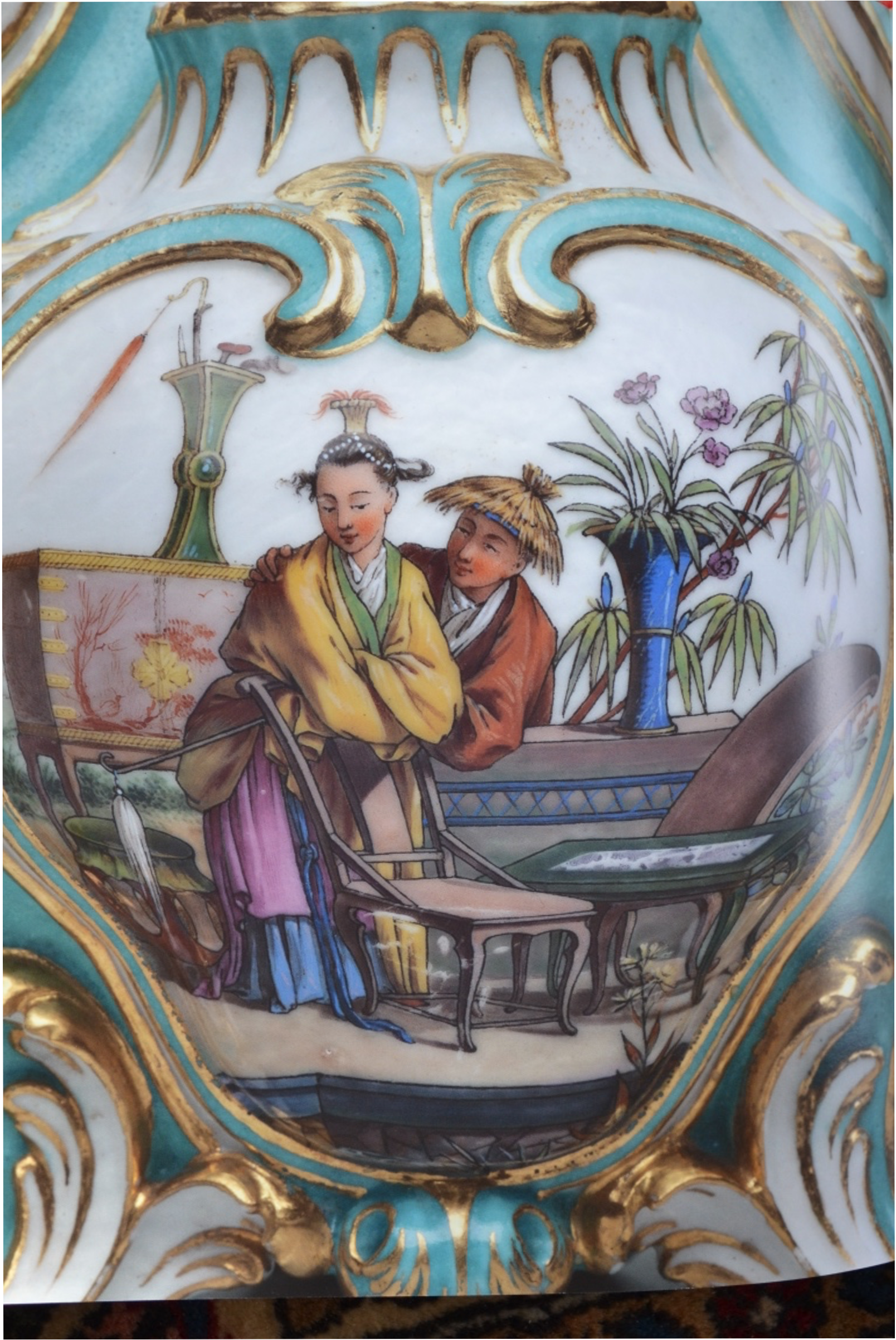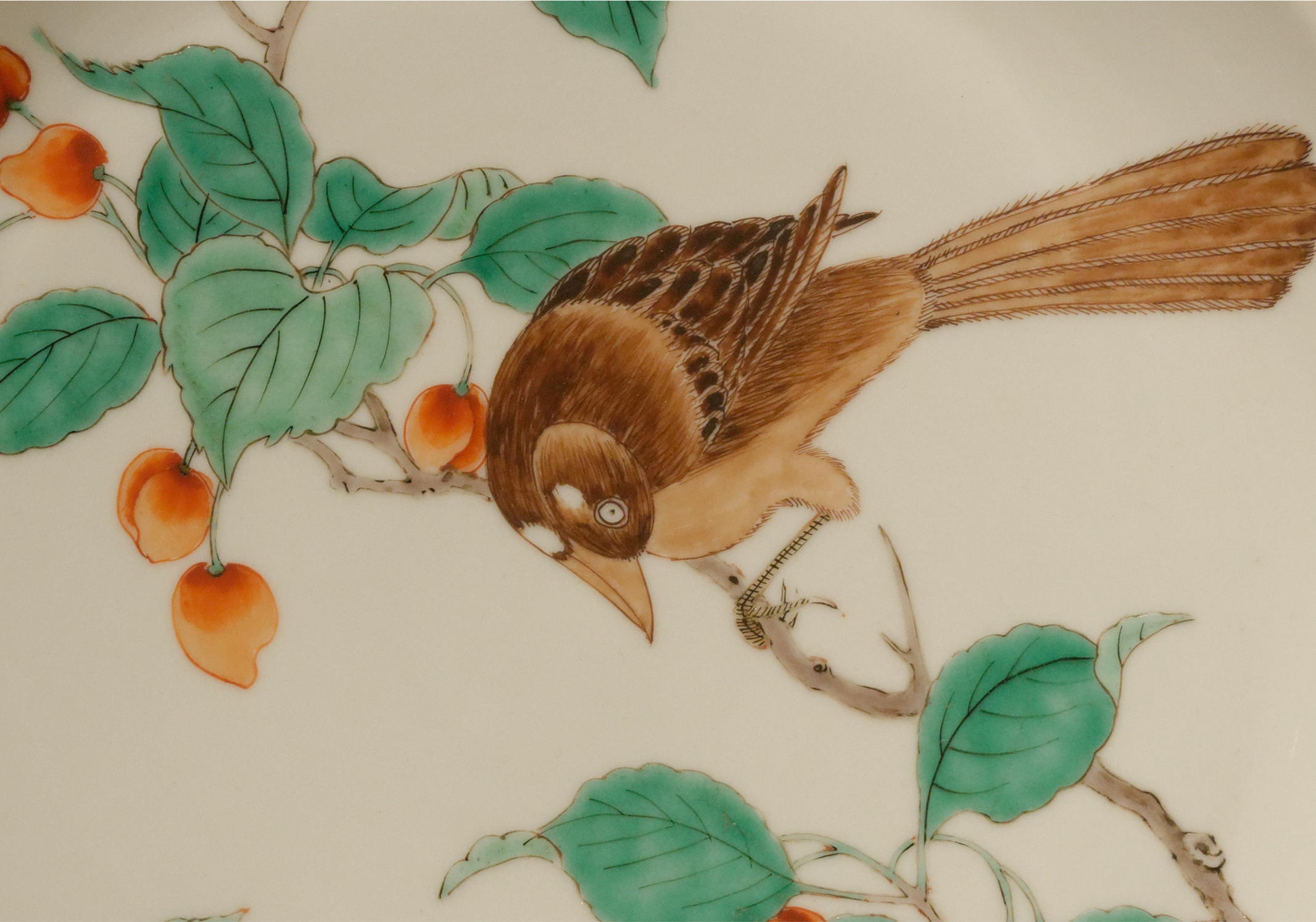
Charles-Nicolas Dodin
Triangular potpourri vase (detail)
1761
Soft-paste porcelain with enamel decoration and gilding
30.5 × 16.5 × 17.8 cm
Sèvres Porcelain Manufactory
Detroit Institute of Arts Museum

Unknown artist
Dish with birds (detail)
1713 (Qing dynasty, Kangxi peridod)
Hard-paste procelain with famille verte enamel decoration
25.5 cm
From China, Jiangxi, Jingdezhen
Musée national des arts asiatiques-Guimet, Paris